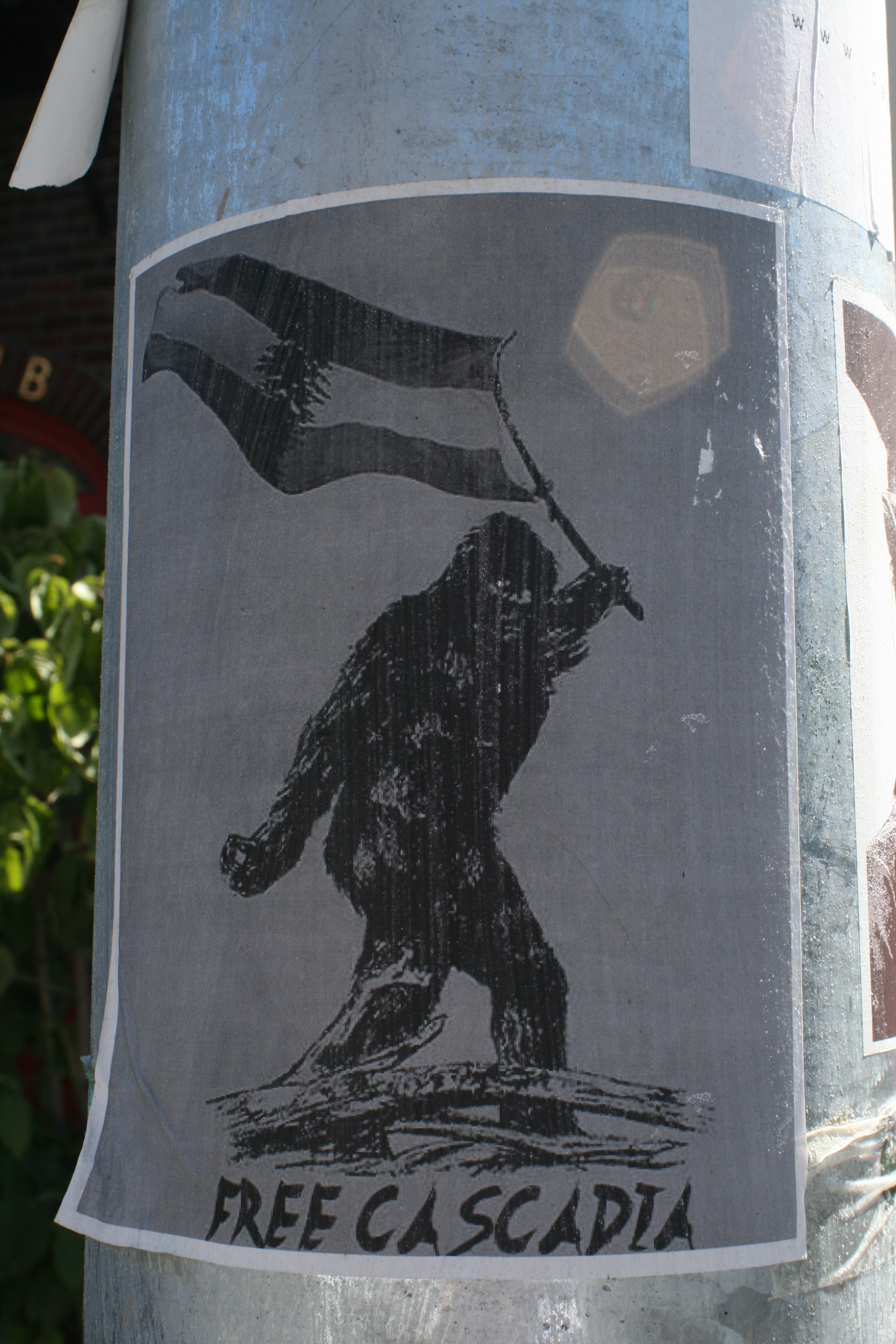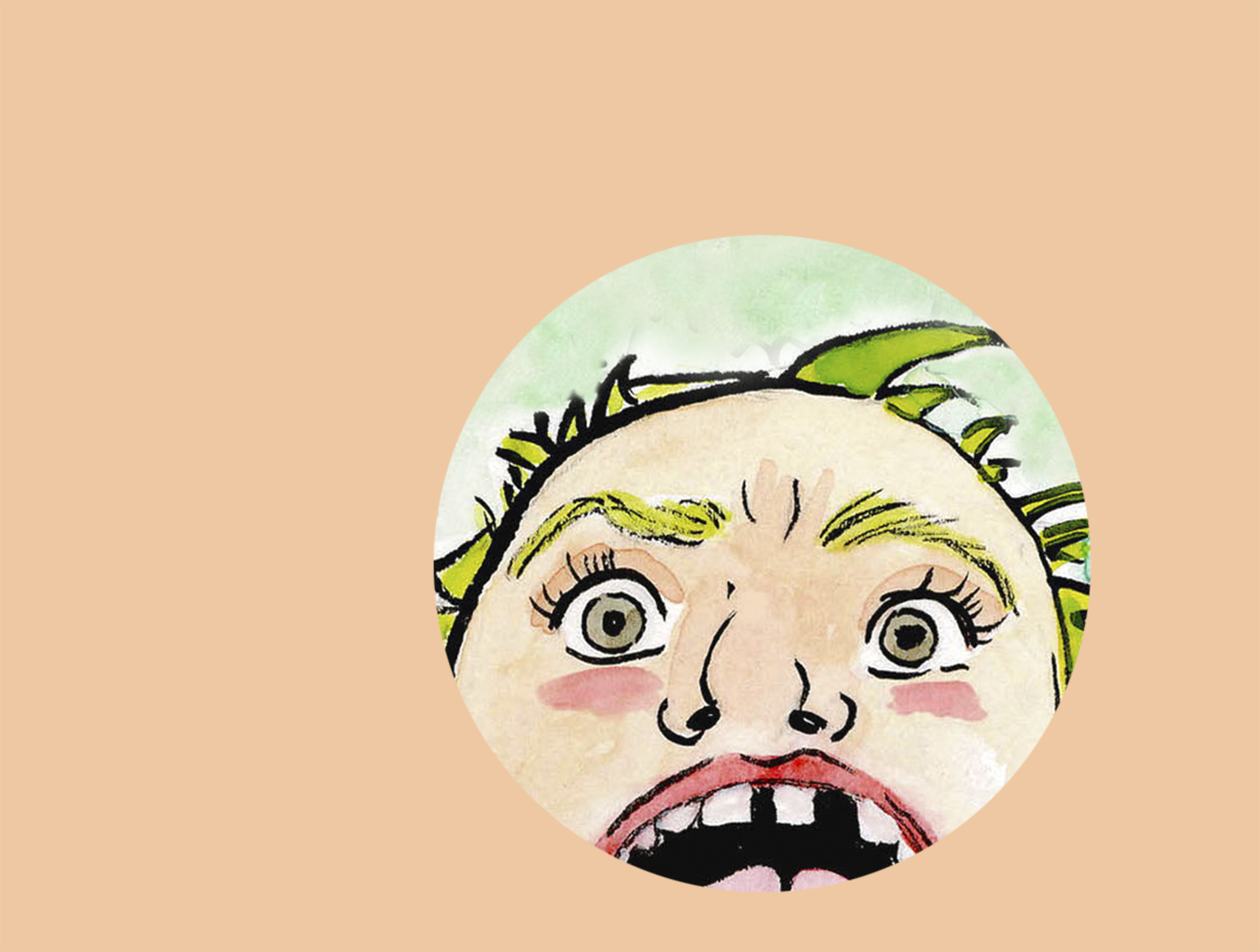Note: This previously unpublished piece was written in the Summer of 2012. Today, on the day before the Fourth of July, we wanted to revisit some Northwesterners who have quietly been engaged their own “fight for independence.”
I drive around the warehouse a couple of times until I find the meeting—the area south of downtown Seattle is mostly cement factories and abandoned smokestacks—abandoned all but for the six or seven guys hanging out in the alley by the train tracks. They are drinking hoppy beer and kicking rocks around. There’s a dog too, wearing a green bandana around its neck.
They look like regular guys mostly. Middle aged. Glasses. T shirts. There’s one mohawk, but aside from that, everyone seems highly employable. They don’t look like the separatists I’m looking for. They are talking about soccer.
One of the bigger guys notices me cautiously coming down the alleyway.
“Are you looking for the Cascadia Now! meeting?” he asks, “because you found it.”
He warmly hands me a beer.
“I’m Adam. Welcome.”
A line forms to shake my hand.
We wait around until four or five more people come to join the meeting. One of them wearing a tattered hoodie takes out his phone to show a grainy video he took of a cop. You can’t really hear or see what’s going on, but he insists it’s a massive human rights violation.
“I’m looking for someone to turn it into an animation,” he says, “that way you can actually watch it. And maybe I’ll overdub it so you can hear what’s happening. Anyone want to help?”
Nobody bites. Adam looks embarrassed.
Conversation about soccer resumes.
Adam invites everyone inside so the meeting can get started. We wind our way through a giant warehouse to the loft, filled with maps of the Northwest, bicycles, and a few stray mice scurrying about.
“Alright, for all you newbies, I’m Adam Munson. Let’s go ahead and get the meeting started, I’ve got a long list of items here…”
Grainy-Video guy raises his hand.
“Yes?” Adam says warily.
“In my Occupy group that I’m in, we opened it up and had an anarchist potluck poetry slam event where people could express their struggles while simultaneously feeding others and I think we could do something like that here and I think it would probably be pretty successful,” Grainy-Video guy says breathlessly. His dreadlocked girlfriend is playing with a finger nail she just bit off.
Adam sighs.
“Okay, Eric, I’ll write that down.”
In the ‘70s, a sociology professor at Seattle University named David McCloskey had a thought.
In his sociocultural studies of the Northwest, McCloskey began referring to a region he called Cascadia. This imaginary country, comprised of British Columbia, Washington and Oregon, ignored international borders in favor of bioregional ones. Rather than defining the area of study by its political borders, McCloskey used natural ecological features as the dividing lines. McCloskey began teaching a class called “Cascadia: Sociology of the Pacific Northwest.” In his class Cascadia was not only a bioregion, but a way of thinking for the distinct people within it.
The idea caught on, garnering bubbling support from outdoorsy eccentrics across the region. In 1994, a Portland man named Alexander Baretich designed a flag for the movement—a blue, white and green striped banner with a Douglas Fir in the middle. The stripes represent the forest, water and sky of the region. The Portland Timbers soccer team proudly flies the flag during matches. It has become the symbol for the Cascadia cup as well, an MLB championship between the Timbers, Seattle Sounders and Vancouver Whitecaps.
The flag sits above Adam as he speaks.
“We’re a non-violent organization,” he explains. “We’re not out to tackle the government, we’re not out to secede from the union. We’re out to raise bioregional awareness and we’re gonna see where it goes from there.”
Adam started the Seattle chapter of Cascadia Now! with some of his buddies in 2011. What started as a three person meeting in a coffee shop has now evolved into an off and on gathering of 15 to 20 people depending on the month. Chapters have popped up all across the Northwest.
“As far as I’m concerned, that’s over 100 percent growth in under a year,” Adam tells me later. “All said and done, that’s pretty good.”
One of the buddies who joined in early was Alex DeVeito, who contributes a “Cascadian History” column to the monthly Cascadia Now! newsletter from time to time. He is wearing a Sasquatch Militia shirt—the name for the would-be law enforcement agency if Cascadia became a nation.
“Cascadia essentially started with Jefferson,” Alex says, speaking of America’s famous forefather. “He never envisioned the United States being as giant as it is. He wanted to see a twin of America on the West Coast. He wanted to see a Republic of the Pacific to be a trading partner for the United States—a new nation exploring its own experiment into democracy.”
According to Alex, McCloskey’s sociological ideas at Seattle U along with a landmark piece of utopian literature called Ecotopia, ignited interest in the idea of the west forming its own country. Ecotopia is a piece of speculative fiction that supposes what America would look like if a West Coast nation were to separate from the United States, focused on green technology and sustainability.
“It reawakened interest in the idea of this bioregional country. The book made people think about different ways of living their lives, and of utilizing technology to live in harmony with nature and each other,” Alex says with a wistful lilt. “Cascadia is many different things to many different people. Politics definitely play into it, but there’s also a general environmental concern.”
During the meeting, after a brief chat about Cascadian backyard gardening, Adam informs everyone that he has uploaded a new street postering kit on the Cascadia Now! website.
“I know how to wheat paste,” Eric says with a raised hand. “I held an arts workshop for homeless youths on how to wheat paste. It was for part of my Occupy group.”
Adam nods. “It’s pretty easy right? Just flour and water.”
“I mean, yes and no,” Eric says before launching into a monologue on the ins and outs of wheat paste chemistry.
Five minutes later, looking a little exhausted, Adam calls for a quick meeting break.
Downstairs he opens another hoppy Northwestern mircobrew and starts up a chat with Mike Hodges, one of his other original Cascadia Now! buddies. Mike has wiry glasses and a bleach blonde mohawk he wears down. The two are talking about a new beer from a Portland brewery.
“Secession Dark Ale,” Mike says with a grin. The packaging is Cascadia themed, working the flag’s colors and its Douglas Fir into the design.
“You know, between the Timbers and these microbreweries, soccer and beer are Cascadia’s two main outlets right now. You can turn on ESPN and watch thousands of people waving a giant Cascadian flag. People find out about the movement on beer labels now.”
Mike got interested in Cascadia because of the shared commonalities he found between people in the region. The coffee, the enthusiasm for hiking, the lefty politics. Also, the soccer and beer, of course.
“When you look at say, Vancouver BC and Seattle, the two share a lot more in common with each other than they do with, say, Washington DC,” Mike says.
Adam rolls his eyes at the mention of our nation’s capitol.
“Nothing gets done there anymore,” Adam says. “We are just too big of a nation to ever agree on anything. Why should we anyway? I don’t care what someone from Florida thinks about gays or green energy. Why can’t we just make our own policy up here rather than remaining in eternal deadlock in Congress on all these issues? I don’t think Cascadia is such a crazy idea—every seems to agree our system doesn’t work, so why not look at this new one?”
As Adam and Mike talk, Eric’s girlfriend approaches from behind.
Suddenly she starts flashing a tiny keychain flashlight on and off in Adam’s eyes.
“I’m going to have to ask you to stop doing that,” Adam says.
She chuckles and scurries away.
“I can’t handle their behavior sometimes,” Adam says, “it’s just, ugh.”
Mike shrugs.
Eric and his girlfriend leave soon after the meeting resumes. So does the dog, which apparently belongs to them. The mood suddenly lightens.
The rest of the meting is spent discussing the impending Cascadian Transborder BBQ, an annual meeting of Canadian and American Cascadians out on the border by the famous Peace Arch sculpture.
Mike is especially excited for the BBQ.
“I think Cascadia has moved toward being a more social and cultural movement rather than a political one in the past few years,” Mike says from behind his glasses. “Between the soccer and beer, it’s just all good fun really.”
Adam nods.
Raising his beer bottle in the air, he makes a toast.
“To the northwest, beer, and soccer. My favorite things. Can’t call me crazy for loving those.”
Update: Things have changed slightly since last year when I visited Cascadia Now. The social and cultural aspects of Cascadia are still present, but the mood has become highly political in the past months. In Seattle, postering efforts have been stepped up by local Cascadian groups in order to combat the bad PR a slew of controversial posters brought the movement.
An unidentified group recently blanketed Capitol Hill with a variety of posters trying to link gay rights to gun rights. One poster shows a lesbian couple holding an automatic rifle with the message “Some people dislike gays. Others dislike Guns. We should not base our laws on personal dislikes.” Nearly every poster in the series sported a Cascadian flag.
On the Cascadia Now! Facebook page, the poster prompted such a heated discussion that an entirely new page had to be created in order to host the debate.
Newer Cascadia Now posters are more overtly political, calling for “a dynamic and open government.” A new group, “Cascadians Against War” has started heavily postering as well, calling for a march “as part of a national day of action against the war on terror” at Westlake on August 3rd.








